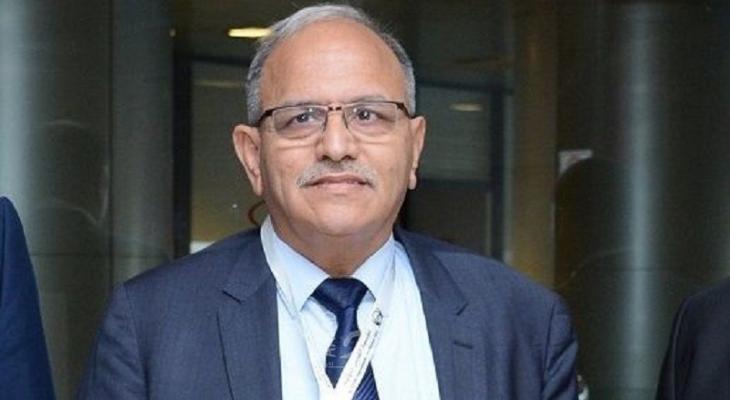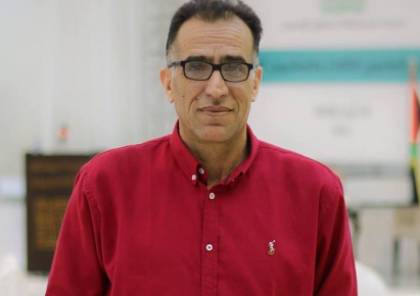Frantic race between the bad and the worse scenarios
Al-Khamisa News Network - Gaza

By: Hani al-Masri
As the second anniversary of October 7 (2023) approaches, the war of annihilation, starvation, displacement and annexation enters its second year. Several scenarios are being posed for the future of the Gaza Strip, the Palestinian cause and the region, with Palestinians largely sidelined. The fiercest contest remains between two scenarios — the bad and the worse. The good outcome, sadly, has very slim chances. The bad scenario is a managed conflict without decisive resolution: a halt to the war, a prisoner exchange and the withdrawal of occupation forces within a few months, followed by a humanitarian relief operation and reconstruction financed by Arab and international donors under U.S. supervision, Hamas removed from power and resistance weapons dismantled, and a transitional authority formed under direct American administration. This would deepen the separation between Gaza and the West Bank, because U.S. proposals envisage giving the Palestinian Authority a nominal “role” in Gaza, as a mere mention, a token player among several and not the most important, in response to Arab states insisting on the PA’s presence to provide Palestinian legitimacy for the arrival of Arab forces to the strip and to enable them to fund reconstruction. An authority perhaps led by someone like Tony Blair — which, given his record with the Palestinians, Iraq and the Arabs, is ironic — would not qualify him to lead in Gaza; on the contrary, it would expose him to trial as a war criminal. The Palestinian leadership should ask itself, and the people should ask it, why matters were allowed to reach this point where guardianship becomes a demand or a reality they do not want or cannot oppose. Deploying an Arab security force for a transitional period would mean placing Gaza under an international–Arab–American–Israeli trusteeship under the pretext of guaranteeing Israel’s security, and would allow settlement, incremental annexation, the corraling of Palestinians into enclaves in the West Bank, and the temporal and spatial division of Al-Aqsa Mosque to continue.
The national reconciliation scenario is also possible if there is agreement on a realistic national program of struggle that opens the path to expelling the occupation
This scenario is possible, especially if the current Israeli government changes and a less extreme administration comes to power, by establishing a Palestinian entity larger than autonomy and smaller than a state across wide parts of the occupied land, with varying symbolic sovereign attributes between the West Bank and Gaza. It could materialize through ideas floated by Trump to the Arab‑Islamic delegation in New York, which are integrated with the Arab plan, becoming the most prominent formulation of what is called the “transitional solution.” That is, unless Netanyahu convinces Trump to overturn or amend it, which would make it difficult for Hamas or even Arab states to accept.
The worst scenario is comprehensive liquidation: it occurs if annihilation and internal displacement continue as a prelude to external expulsion, the occupation of the Gaza Strip and its resettlement, large‑scale displacement of Gaza’s population, and perhaps the creation of what was previously called the “Middle East Riviera,” annexation of the West Bank or large parts of it, the undermining of the Palestinian Authority and its reduction to a puppet authority or to local civil administrations akin to separate autonomous administrations. It would also include granting Palestinians “resident” status without national rights or political sovereignty… This scenario means the liquidation of the Palestinian cause at its roots, with no room for a political entity or national rights for Palestinians.
The good scenario is national reconciliation, and although its chances are slim, it is possible if the war stops, the occupation withdraws, prisoners are released and urgent humanitarian aid is delivered, followed by forming a national unity government under independent Palestinian reference, rebuilding the PLO institutions to include the full political and social spectrum, and moving to elections as quickly as possible, or agreeing on a single administration while guaranteeing pluralism that strengthens, monitors and ensures participation. It is also possible if there is consensus on a realistic, achievable national struggle program that opens the way to ejecting the occupation and achieving independence.
However, the absence of unity and Palestinian division, the marginalization of the PLO, Hamas’s preoccupation with war and negotiations, its limited options, its lack of interest in presenting a comprehensive vision covering the entire Palestinian people, and plans to impose measures on the leadership or to provide realistic alternatives to what the leadership rejects — all of this makes that scenario currently out of reach. The bad scenario therefore appears more likely because it serves Washington’s and Tel Aviv’s aim of saving themselves from the quagmire of a war that has not achieved its major objectives (extermination, displacement, annexation, occupation, settlement and domination of the Middle East), due to catastrophic political, legal, diplomatic and human losses and the damage to Israel’s standing and its role in U.S. strategy, despite the catastrophic Palestinian losses. This scenario also spares regional stability and Washington’s plans to expand the Abraham Accords: the UAE, Saudi Arabia, Britain, France and others have threatened punitive measures against annexation, including suspending existing agreements and halting new ones. It also opens the door to the quick release of Israeli captives in the days immediately after a ceasefire, the removal of Hamas from power and the disarmament of the strip, and it provides a breathing space.
The worst scenario draws strength from the nature of the extreme right‑wing Israeli government, from its perception that it has a historic opportunity that must not be missed, from unconditional U.S. support, and from the Trump administration’s focus on the release of Israeli captives to such an extent that there is fear, after their release, it will give Netanyahu the green light to resume the war — especially since the fate of the Nobel Peace Prize will be decided in mid‑October, which reinforces illusions of “military resolution of the conflict.” The good scenario is unlikely because it requires Palestinian national unity, which seems distant after the deepening division and the insistence on removing Hamas and disarming it as a condition for any transitional solution, coupled with the official leadership’s rush to adopt it and impose exclusionary conditions on electoral participation as if they were Palestinian conditions. The good scenario needs a political will that is absent on both sides of the divide, especially within the leadership: a will that rejects guardianship and taming, prioritizes unity and the national interest rather than this faction or that, bets on self‑reliance rather than others, upholds the right to resistance, and capitalizes on the broad global solidarity movement with Palestine that is likely to grow.
Palestinian national unity appears distant after the deepening division and making the removal of Hamas from power a precondition for a transitional solution
Today’s events reaffirm that power has limits however extensive: Israel, which imagined it had eliminated the possibility of a Palestinian state, finds itself, because of its extremism and excesses, facing a reality that makes that prospect closer than at any time — but that depends on the Palestinians’ ability to formulate a new vision and a unified national leadership that benefits from international shifts, and that turns wide and growing global sympathy — which is likely to increase as the true nature of the Zionist project becomes clear as a colonial, settler, racist project aimed at expansion, domination and the removal of Palestinians rather than living with them in security and peace — into real pressure that forces Israeli withdrawal and makes occupation costlier than its continuation, rather than returning to the reproduction of negotiations that were used to cover what successive Israeli governments have been doing: imposing occupational, racist and settlement facts that make the Israeli solution the only practical one on offer.
The bad scenario may be the one available now, but it need not be the end. Arab, Islamic and friendly countries should respond to their peoples’ call to achieve freedom and justice for the Palestinian people, not be satisfied with merely stopping the war and withdrawing, but help Palestinians view that as a transitional phase to catch their breath, draw lessons, and move forward to formulate a realistic, combative national project that protects the Palestinian people and preserves their cause. The meeting between Netanyahu and Trump (which had not taken place at the time of writing this article) will reveal which path events will take: an end to the extermination or its continuation… toward the bad scenario or the worst scenario.






